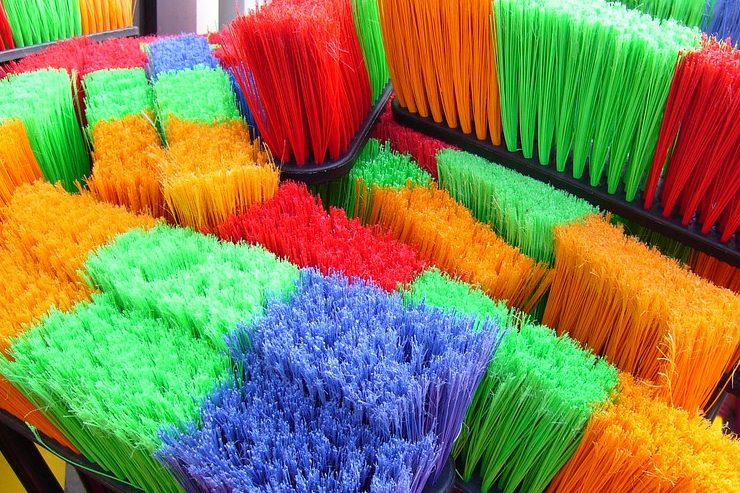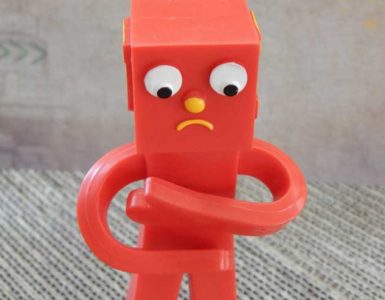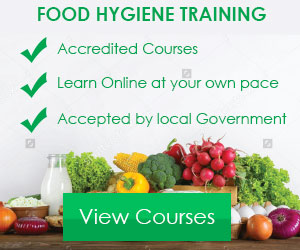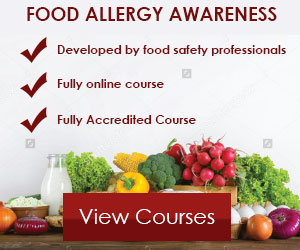Ever given thought to how important it is to keep your restaurant clean? Today, restaurant cleaning is not just a regulatory matter. In fact, it’s only normal to keep the kitchen area clean and germ-free — you wouldn’t want your customers to look down your business right?
Speaking of which, most customers expect their eateries to hold cleanliness in high regard; they’re incredibly quick to notice signs of poor hygiene and uncleanliness regardless of how tasty the food turns out to be. Moreover, you wouldn’t want your catering business to boast a series of bad online reviews in regards to hygiene standards.
Every commercial kitchen or catering environment is bound to experience a buildup of dirt and grease overtime — it could end up covering surfaces and cooking equipment. The good news is, you can get rid of all these by getting premium commercial kitchen cleaning supplies and following our ultimate kitchen cleaning guide.
Note: you can divide the job into smaller tasks, going on and on till every part of the kitchen is sparkling clean.
Let’s get started!
General Guideline For Cleaning Kitchen Items — How Often Should You Use Them?
- Surfaces and kitchen utensils should be cleaned immediately after each use.
- Be sure to clean sinks as often as possible — it actually depends on how much you use it throughout the day.
- Ovens should be cleaned on a weekly basis. It’s recommended to clean fridges and freezers monthly.
- As for the bins, your kitchen staff would want to clean them on a weekly basis.
Note: It’s all up to you to decide how often the kitchen areas and appliances should be cleaned — it depends on their frequency of use as well as how busy your restaurant is.
What Do You Need to Get Started?
- Broom
- Dustpan
- Mop bucket
- Microfiber cloths
- Sponge
- Multipurpose cleaner
- Industrial cleaning gloves
- Floor cleaner
Now that we’ve gotten that out of the way let’s proceed with the full commercial cleaning guide.
We’re going to cover everything you need to know about cleaning your restaurant’s:
- Dishwasher
- Sink
- Hard Surfaces
- Fridge
- Microwave
- Oven
- Floors
How to Clean a Dishwasher
For starters, it’s recommended that the dishwashers reach a temperature of 82.2 degrees Celsius especially if you’re looking to clean it thoroughly. Moreover, you’ll want to adopt the habit of prewashing dishes, cutlery, and other kitchen utensils before placing them in the dishwasher. Why? Well, it’s only because doing this will help get rid of baked-on stains, thus making it easier for the dishwasher to do a great job. It’s also important to note that leftover food on dishes can take a toll on your dishwasher as its likely to clog the filters and affect its overall performance. The bottom line; you would want to give your dishwasher a touch if you find that the dishes keep coming out with stains even after cleaning the filter.
Note: Hard water can hamper the performance of your dishwasher, but the good thing is, water softening salts can remedy the situation.
Cleaning Tips
- Get a multipurpose cleaner and use the same to deep clean every part your dishwasher. Be sure to use a non-abrasive sponge to scrub all areas thoroughly and wipe down with a damp cloth.
- Always remember to leave the door open for about 10 to 15 minutes at the end of each load. Doing this will help keep humidity at bay thus preventing unwanted mold growth.
How to clean your Sink
The sink is yet another part of the kitchen that can turn to a hotbed for germs especially if you fail to take good care of it. As a restaurant owner, there’s a good chance that your kitchen sink is always exposed to all kinds of kitchen dirt and waste, as such, you’ll want to adopt the habit of cleaning it on a regular basis. It’s important to note that kitchen sinks are susceptible to clogs which typically comes as a result of the buildup of heavy oil and grease. That being said, it’s in your best interest to figure out how to keep these deposits in check.
But how can you go about it?
Well, you may want to invest in a Greasepak — it’s your best bet if you’re looking to get rid of FOGS (fats, oil, and grease) while complying with laws such as BS EN1825. Besides keeping your pipes hygienically clean, Greasepak also helps improve water quality downstream, and it’s all thanks to the beneficial bacteria it contains. Essentially, the bacteria help break down waste more efficiently and keep the pipe works in tip-top shape.
How to Clean Hard Surfaces
Got hard surfaces in your commercial kitchen? If yes, you’ll want to clean and disinfect them on a regular basis. The thing is, germs and bacteria have a thing for hard surfaces, and cracks can be the perfect spot for them to thrive. For the most part, cracks on hard surfaces or kitchen utensils can be a pathway to food debris and excess moisture, both of which could trigger the buildup of bacteria. As for your surfaces, it’s great to use a sanitizing spray to remove dirt and food debris — you’ll also want to leave the surface to dry naturally especially if you’re looking to get a perfect streak-free finish.
Cleaning Tips
- Want a perfect job? Well, just start by clearing storage items and getting rid of loose debris.
- Be sure to hold the spray bottle about 8 inches away from the surface before using and allow to sit for at least 10 minutes before wiping.
Good to Know
- Always use non-abrasive scrubbing pads when cleaning especially if you’re looking to protect your surfaces.
- It’s also critical to toss your dishcloths in the washer after using them to clean surfaces — just be sure to set it at a reasonably high temperature of at least 60 degrees.
- Don’t forget to put on your gloves and always wash your hands thoroughly once the entire job is done.
- Finally, adopt the habit of cleaning as you go — this will make the upcoming job a whole lot easier for you.
How to Clean a Fridge
Here are some cleaning tips to follow if you’re looking to clean the fridge in your restaurant:
- For starters, turn off the fridge and take everything out of it and ensure that it’s empty. You’ll want to use a non-abrasive sponge to clean spillages or tough stains.
- Now remove the shelves or drawers and wash in a basin of warm soapy water. Rinse and leave to dry naturally.
- Get your multipurpose cleaner and spray it throughout the fridge. Now use a microfiber cloth to wipe down the walls, seams and door seals — be sure to use a non-abrasive sponge to clean up leftover solution.
- Now you can replace everything including the good foodstuff, shelves, and drawers. Be sure to turn on the fridge and clean the exterior with a damp microfiber cloth. Also, remember to disinfect the door handle with antibacterial wipes and leave to air dry.
How to Clean a Microwave
The microwaves are so easy to clean — you just need water, multipurpose cleaner, and a dry cloth. For starters, get a microwave safe bowl and fill the same with about two cups of water — just place it in the microwave (remember to switch it on) and leave for 2 to 3 minutes. Doing this will help loosen the stains in the appliance. Once the time is up, use a multipurpose cleaning spray and a dry cloth to wipe the inside.
How to Clean an Oven
Trying to figure out when to deep clean your oven? Well, you’ll want to give it a good clean as soon as it begins to smoke. The good thing is, it’s super easy to get the job done as long as you have the right cleaning supplies and a few cleaning tips. Speaking of cleaning products, it’s in your best interest to choose quality and work with the manufacturer’s safety precautions. For the most part, a powerful oven cleaner will help break down stubborn baked-on stains, thus making it easier to get the job done — your oven will be as clean as new in no time.
Cleaning Tips
- Start by opening the windows so the kitchen can be well-ventilated — this is crucial. After that, get some paper towels and use them to cover the floor area just below the oven door; doing this will protect the floor and prevent the mess that’s likely to happen.
- Now remove the oven shelves and soak the same in a basin of warm water (be sure that it contains washing liquid). The shelves should be easy to clean afterward.
- Got tough stains inside the oven? If yes, you’ll want to use something blunt to loosen them — a spoon should work great. Once you’re done, apply the cleaning formula; just be careful not to spray the product on the heating elements. The most important thing is for you apply it to every part of the oven including the corners. Speaking of corners, you may want to use a paintbrush to make the application a whole lot easier for you.
- Done with the application? Just leave it to sit for a couple of hours — it’s also great to leave it throughout the night. Now, get a high-quality scrubbing brush and use it to remove the dirt and grease — you can also use a dishwasher brush for this. Once you’re done, use a microfiber cloth to give the oven a final touch of perfection — just use the cloth to wipe it clean, it’s as simple as that. Finally, replace the oven shelves and cook or bake whatever you want!
How to Clean Kitchen Floors
After cleaning the dishwasher, oven, microwave and the like, the next area you’ll want to touch are your floors. As a restaurant owner, it’s super important to ensure that your floors are always as clean as can be — doing this will impress your patrons and improve air quality; it’s more of a win-win for you. The good thing is, if your staff adopts the habit of cleaning the floors regularly, you won’t have to rely on air fresheners and that’s great. As expected, you should be looking to get a professional floor cleaning solution to get the job done — pair it with a bit of elbow grease, and you’ll get a sparkling clean floor that both you and your guests are sure to love.
Handy Tips
- Don’t forget to clean in the gaps between appliances as well as those tricky corner spots — a perfect job is key.
- Now it’s time to move on to the bathroom floors. As we know, these areas are super important to maintain especially if your business caters to a lot of customers including children and adults. Just be sure to clean up every other area before cleaning the toilet. As you’ve probably guessed, doing this will minimise the spread of germs and bacteria.
Got Grease on Your Kitchen Floor? Here’s How To Get Rid of It!
Start by removing excess layers of grease with paper towels — just be sure to get rid of as much grease as you can. Once you’re done, apply a high-quality kitchen degreaser to the affected area and leave to sit for 10 to 30 minutes. Essentially, the formula works by breaking down grease molecules to allow for easy cleaning. After the time has elapsed, use a disposable cloth to clean up the mess and mop the floor to perfection.
What About Touch Points?
It’s also critical to pay special attention to touch points in your restaurant — failure to clean them can promote the spread of germs and bacteria. As you’ve probably guessed, touch points are areas that are touched every now and then including toilet flushes, faucets, light switches, hand dryer buttons and the like.
The good news? These areas are super easy to clean — you only have to spray the surfaces with disinfectant and wipe with a clean, dry cloth. Just be sure to allow the disinfectant to sit for a few minutes before wiping.
Here are areas you’re likely to forget:
- Underneath appliances including fridges, cookers, freezers and the like.
- High shelves
- Drains and gullies
- Gaps between walls and appliances
- Fridge doors
- Ventilation systems
Other Cleaning Tools You Would Want To Have Handy
Grout Brush
This tool is excellent for removing tough stains on the floor prior to cleaning. In essence, it makes the job a whole lot easier for you.
High-Level Dusting Kit
Got hard to reach spots in your restaurant? If yes, you may want to get your hands on this tool — it’s sure to be a lifesaver.
Mechanical Brush Sweepers
Looking to clean those floors in record time? If so, mechanical brush sweepers are sure to be your best bet. It’s as easy gliding the wheels across the floor and letting the rubber blades work their magic. The best part? The blades protect the floor, so you won’t have to worry about marks and scratches.
Follow Colour-Coded Cleaning
Finally, it’s in your best interest to use work with colour coded cleaning especially if you’re interested in minimising the spread of germs and bacteria. For the most part, colour coded cleaning is the process of assigning colours to cleaning equipment with the aim of keeping cross-contamination at bay. This process is incredibly important to you as a restaurant owner, so be sure to provide your staff with the necessary information they need to comply.
So there you have it! These are just about everything you need to know about keeping your restaurant clean and free of disease-causing germs and bacteria. Just be sure to work with this guide and your catering business will be well on its way to being one of the top players that appeals to both existing and prospective patrons.






























